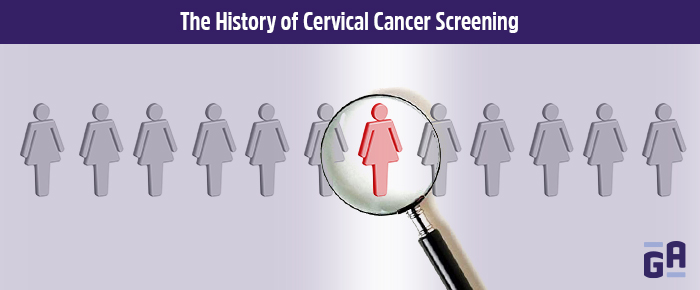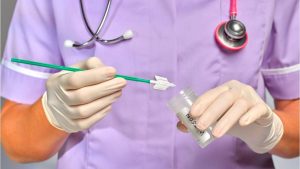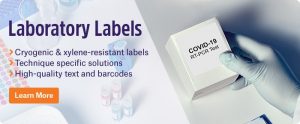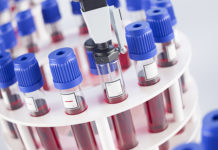 Though cervical cancer has likely existed for far longer, its official discovery occurred as recently as 1886, when Sir John Williams described a lesion that corresponded to a carcinoma in situ of the cervix. Since then, much research has gone into developing methods to decrease the incidence of cervical cancer in women, including cervical cancer screening programs, which are responsible for reducing the incidence of cervical cancer by more than half since the 1960s.1
Though cervical cancer has likely existed for far longer, its official discovery occurred as recently as 1886, when Sir John Williams described a lesion that corresponded to a carcinoma in situ of the cervix. Since then, much research has gone into developing methods to decrease the incidence of cervical cancer in women, including cervical cancer screening programs, which are responsible for reducing the incidence of cervical cancer by more than half since the 1960s.1
The Original Pap Smear
Before the development of modern cervical cancer screening, pathologists relied on the examination of tissue biopsies derived from an observable lesion. However, a careful study from Dr. George Papanicolaou, now known as the “father of cytology,” was about to change that. Dr. Papanicolaou, originally born on the island of Euboea in Greece, was pushed early on into studying medicine by his father. He worked as a surgeon in the military, helped patients with leprosy, and studied zoology at the University of Munich, eventually obtaining his Ph.D. He emigrated to the United States in 1913 looking for better career opportunities, even though he barely had any money or resources, to begin with.2
Once in the United States, Dr. Papanicolaou joined New York University’s Pathology Department as well as Cornell University Medical College’s Anatomy Department, where he began studying the sex chromosomes of guinea pigs. In 1920, he began focusing his efforts on understanding the cytopathology of the human reproduction system, where he came to distinguish the differences between normal and malignant cervical epithelium using only swabbed cells placed on microscope slides.2 In 1928, he first presented his findings at the Third Race Betterment Conference—his supervisor was, in fact, a eugenicist—but was rebuffed by his fellow scientists due to the poor quality of his photos and typographical errors, and his idea rejected as no one thought that “dead” cancer cells could be used to diagnose cervical cancer.1
It wasn’t until 1939 that his work was finally recognized when he began collaborating with Dr. Herbert Traut and Dr. Andrew Marchetti. Their studies culminated in a landmark 1941 publication that showed cancer could be detected in asymptomatic women whose biopsies tested negative, along with the book “Diagnosis of Uterine Cancer by the Vaginal Smear,” which was published in 1943 and widely considered a milestone in the field of cervical cancer detection. In the book, Dr. Papanicolaou described what came to be the Pap test, where normal and abnormal vaginal smears could be accurately classified by simple microscopic observation.1,2
Ayre’s Modification
The first iteration of the Pap smear collected cells from the vagina using a glass pipette, which obtained only a small number of cells. Pathologists were reluctant to prescribe the test because of this specific limitation, which made the test time-consuming and laborious. Recognizing how hard it was to perform, Dr. J. Ernest Ayre, a Montreal gynecologist, decided to modify the protocol using a scraping method with a spatula instead of the pipette. His method of taking what he called a “surface biopsy” of the cervix via spatula was so efficient that the technique remains mostly unchanged, even as of today.1
Early Cervical Cancer Screening in North America
The Pap test was slowly introduced in Canada and the United States, mostly through clinical trials. Cytology labs were a rarity in the 1950s, and the idea that a cytology test could be used to diagnose patients was still not fully accepted. It was only when cancer societies representing Canada and the United States began recommending the Pap test as an effective means to prevent cervical cancer that screening rates truly began to increase nationwide. Over the next several decades, the rates of incidence and mortality due to cervical cancer dropped significantly; incidence rates were more than halved, from 21.6 per 100,000 women in 1969 to 10.4 per 100,000 by 1990, and mortality decreased from 7.4 per 100,000 to 2.4 per 100,000 within a similar period. Eventually, these rates plateaued in the 1970s, and a task force appointed by the Conference of Deputy Ministers of Health of Canada was set up in 1976 to develop strategies to further reduce them. The task force ultimately concluded that Canada should implement organized screening programs for cervical cancer, including central or regional cytology registries.1

Current Guidelines and Technologies
With time, there have been significant improvements to the Pap smear, such as the advent of liquid-based cytological screening, which significantly reduces sampling error, improves specimen quality, and makes slide interpretation easier. Liquid-based screening involves using the same basic scraping method as the traditional Pap smear, but fixes and then analyzes the cells using an automated system instead of merely smearing them on a slide. This technique, pioneered by Hologic® with their ThinPrep® system, is the predominant method for Pap testing in the United States, with nearly all the Top 50 US Best Hospitals for Gynecology using the test.3
In addition to the Pap test, testing for the presence of human papillomavirus (HPV) using a DNA-based assay is also recommended for many women. As HPV has been identified as the primary cause of cervical cancer, concurrent testing with the Pap and an HPV test has been shown to reduce the incidence of cervical cancer and precancer compared with using either single test in women between the ages of 30 and 65 years. In this age group, it’s also been shown to be a cost-effective and potentially long-term cost saving measure to reducing the incidence of cervical cancer compared with using HPV testing alone.4
Currently, the American Cancer Society, the American Society for Colposcopy and Cervical Pathology, the American Society for Clinical Pathology, and the American College of Obstetricians and Gynecologists all recommend cervical cancer screening for women aged 21 to 65 years:5
- Women between 21 and 29 years of age should undergo Pap testing once every 3 years.
- Women between 30 and 65 years of age should be co-tested with a Pap test and an HPV test once every 5 years. They can also be assessed with just the Pap test once every 3 years.
- Women over the age of 65 with acceptable negative prior screening results do not need to be tested.
- There is an “A”-level recommendation from the US Preventive Services Task Force that states women between 30 and 65 years may be screened solely with HPV testing once every 5 years.
LabTAG by GA International is a leading manufacturer of high-performance specialty labels and a supplier of identification solutions used in research and medical labs as well as healthcare institutions.
References:
- Shaw PA. The History of Cervical Screening I: The Pap. Test. J SOGC. 2000;22(2):110-114.
- Tan SYT TY. George Papanicolaou (1883–1962): Discoverer of the Pap smear. Singapore Med J. 2015;56(10):586-587.
- Wheeler D. Technology Matters: How the Pap Test Protects Your Patients. Marlborough, MA; 2019.
- Felix JC. Primary HPV Testing vs. Co-Testing for Cervical Cancer Screening: Outcome and Economic Support That Co-Testing Is Superior. Marlborough, MA; 2016.
- Hologic Inc. Cervical Cancer Screening Guidelines: Analyzing the Evolving Evidence. Marlborough, MA; 2019.




